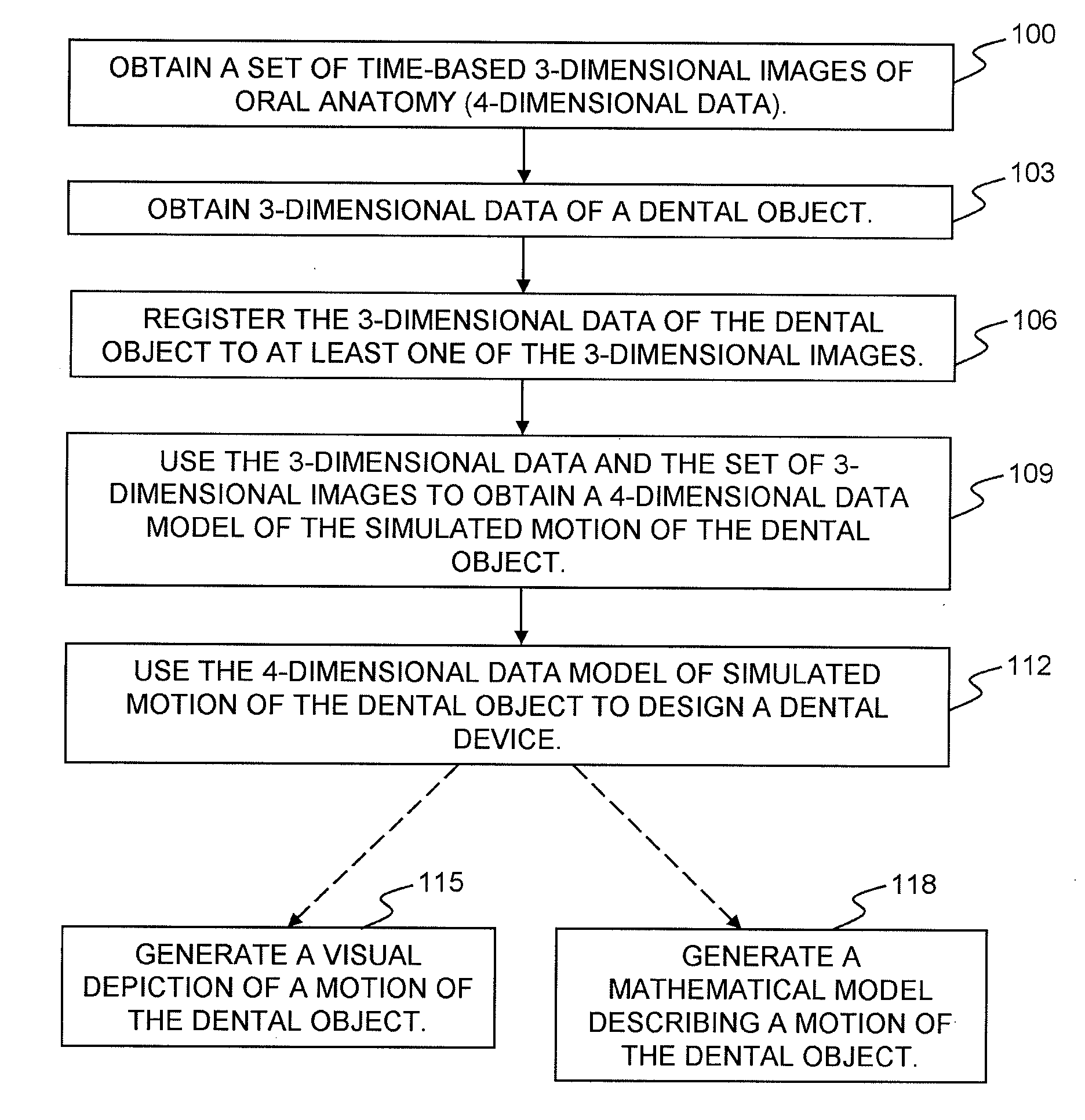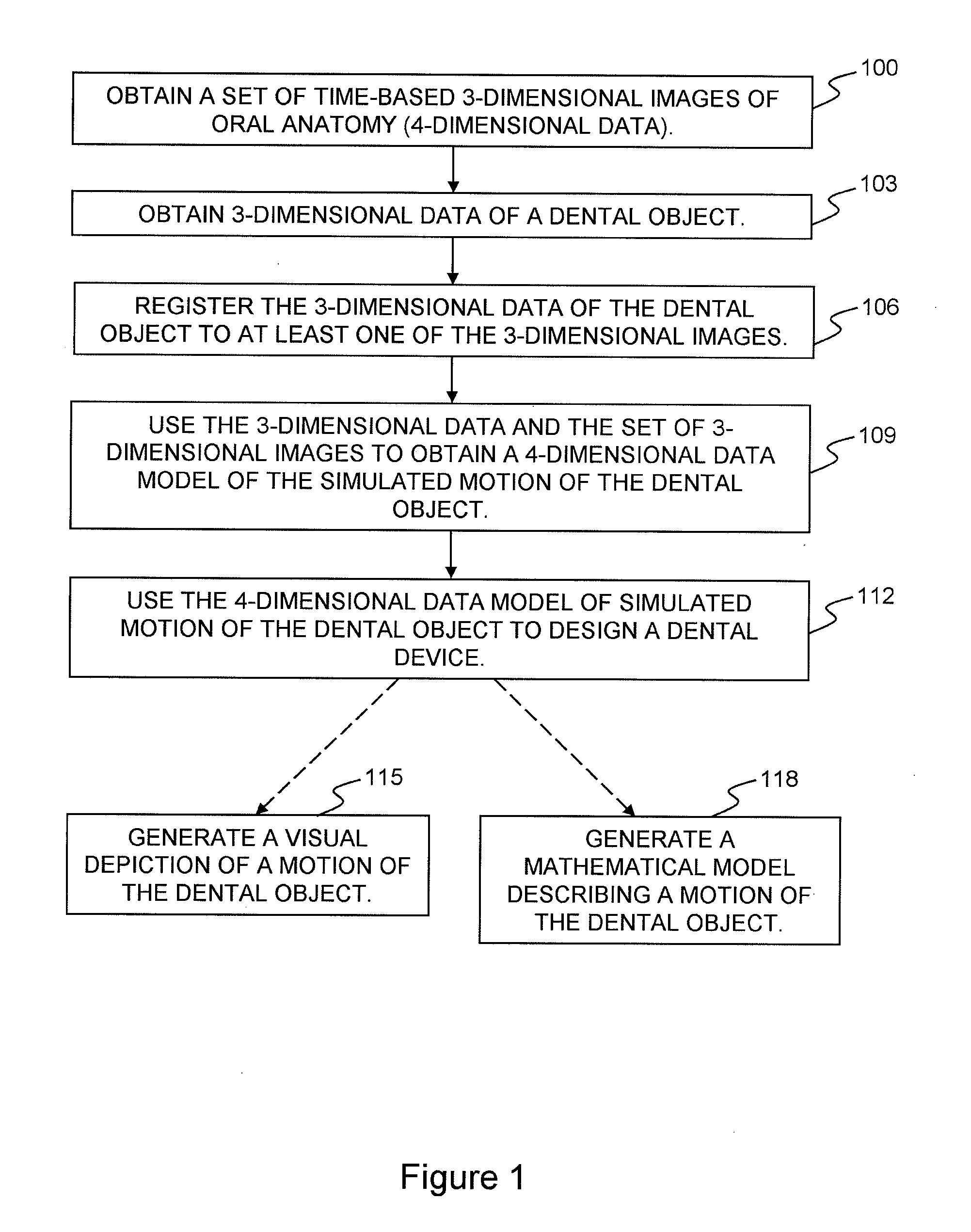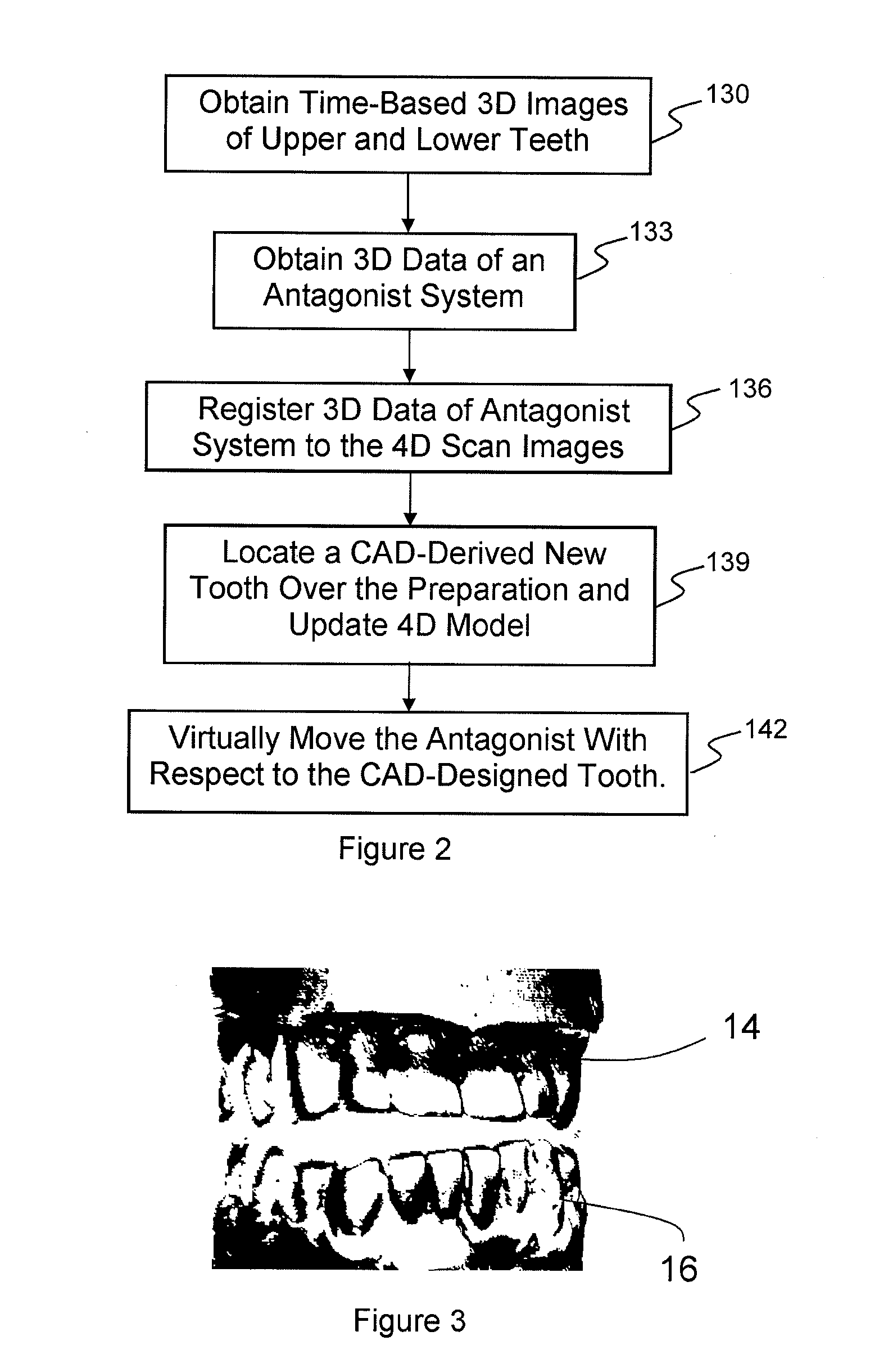Method Of Designing Dental Devices Using Four-Dimensional Data
a dental device and four-dimensional data technology, applied in the field of four-dimensional data design of dental devices, can solve the problems of significant affecting the long-term performance of dental restorations, needing adjustments, and no work to date has reported the use of patient-specific motion data from these devices to enhance the design of dental restorations. the effect of cad
- Summary
- Abstract
- Description
- Claims
- Application Information
AI Technical Summary
Benefits of technology
Problems solved by technology
Method used
Image
Examples
example using six
Degree of Freedom Expressions
[0096]This method is the basis for animating an antagonist object system by computing six degrees-of-freedom (6D of) mathematical expressions, as outlined in FIGS. 4 and 5. The following sequence is provided as a non-limiting example only. For this example, the full upper and lower arch of teeth is used as the object system. An equivalent result may be obtained using a different progression along the same technical aspects.
[0097]6D of expressions are coordinate transforms used to relate two coordinate systems to each other within the same space. Such transformations consist of a variety of functions that define both rotations and translations. The exact mathematical tools used to execute such transformations are apparent to those skilled in the art and are not described here. Reference frames may also be used for a 6D of method by defining the fixed location of the upper arch, and a starting position for the lower arch.
[0098]A 6D of expression is compute...
PUM
 Login to View More
Login to View More Abstract
Description
Claims
Application Information
 Login to View More
Login to View More - R&D
- Intellectual Property
- Life Sciences
- Materials
- Tech Scout
- Unparalleled Data Quality
- Higher Quality Content
- 60% Fewer Hallucinations
Browse by: Latest US Patents, China's latest patents, Technical Efficacy Thesaurus, Application Domain, Technology Topic, Popular Technical Reports.
© 2025 PatSnap. All rights reserved.Legal|Privacy policy|Modern Slavery Act Transparency Statement|Sitemap|About US| Contact US: help@patsnap.com



